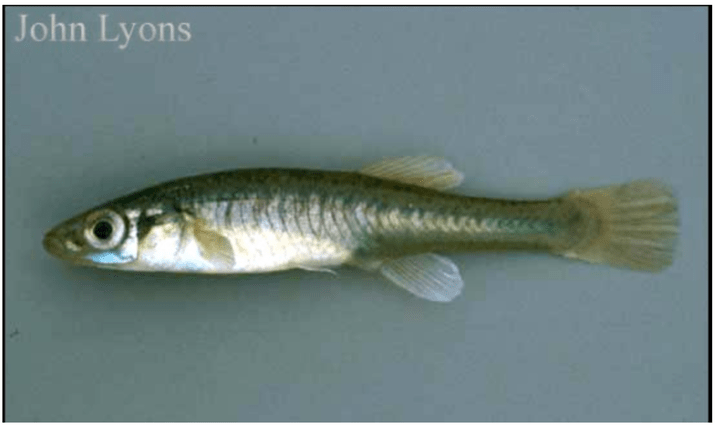Key Characteristics:
- More post-anal myomeres than pre-anal.
- Total post-anal myomeres less than 25
- Caudal peduncle (a portion of the body right before the caudal fin) is the same thickness as the fin
- Large upturned mouths.
- Big eyes.
- Single dorsal fin.
- Adults are usually in the 20+ mm range/yellowish color with dark lateral bands.
- Larvae have lots of scattered melanophores giving a “dusky” appearance.
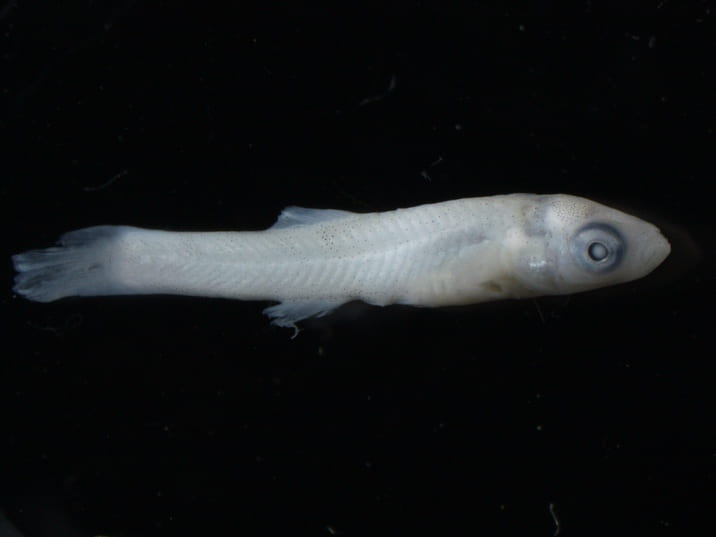
Larval Banded Killifish. United States Fish Wildlife Service. Marian Shaffer. 2017.
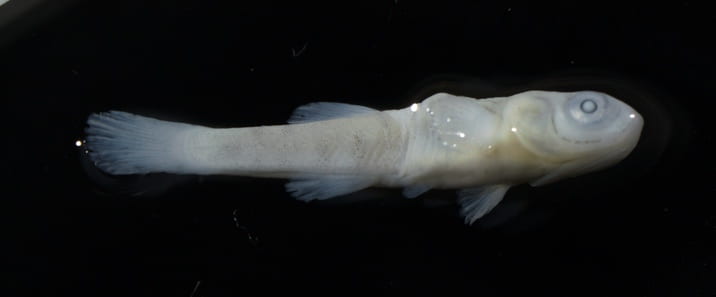
Larval Banded Killifish. United States Fish Wildlife Service. Marian Shaffer. 2017.
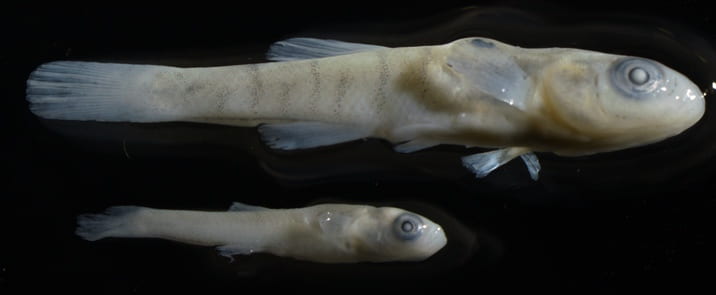
Different Larval Stages of banded Killifish. United States Fish Wildlife Service. Marian Shaffer. 2017.

Larval Banded Killifish. 10 mm. United States Fish Wildlife Service. Green Bay, WI. Adam Dziewa. 2018.

Larval Banded Killifish. 25 mm. United States Fish Wildlife Service. Green Bay, WI. Adam Dziewa. 2018.
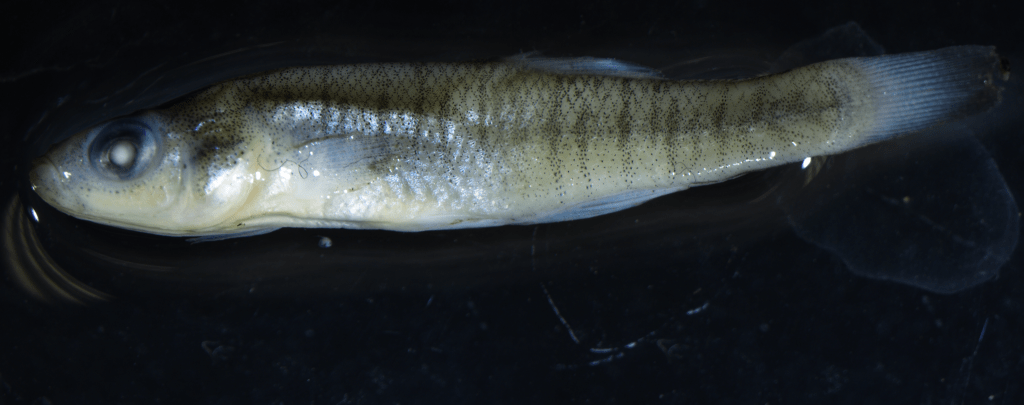
Juvenile Banded Killifish. 36 mm. United States Fish Wildlife Service. Calumet Harbor, IL. Ashley Smith. 2018.
- Body not elongated, eel-shaped, round in transverse section, uniformly pigmented (1B)
- Chin barbels absent (3B)
- Snout short, its length usually less than 10% TL; median fins otherwise (5B)
- Median fins or finfolds showing distinct separation (7B)
- No adipose fin, or demarcation of one, in finfold (10B)
- Preanal myomeres significantly less than postanal myomeres (difference greater than five myomeres) (14B)
- Postanal myomeres less than 35, total myomeres less than 50, chin barbel absent (16B)
- Postanal myomeres less than 25, preanal length usually greater than 40% TL (17B)
- Mouth superior, single dorsal fin (18A)
- Cyprinodontidae/Fundulidae
Adult History
- Physical Description
- 10-20 brown/green bars along the sides, the tail is rounded, slender body, the continuous groove between upper lip and snout, 40-49 lateral scales, 13-15 dorsal rays and 10-12 anal rays, the dorsal origin is ahead or equal to the anal origin, and pelvic fins ahead of dorsal origin
- Spawning Habitat
- In shallow portions of brooks, creeks, rivers, lakes, and ponds with vegetation
- Spawning Substrate
- Eggs grow on rocks or aquatic plants
- Spawning Behavior
- Male will establish and defend its territory
- Male’s color will intensify to attract females
- Females will lay a cluster of eggs
- Time of Year
- May-August in Lake Michigan
- Spawning typically takes place at water temperatures of 65-90°F
- Diet
- Small crustaceans, aquatic insects, flying insects, and seeds

